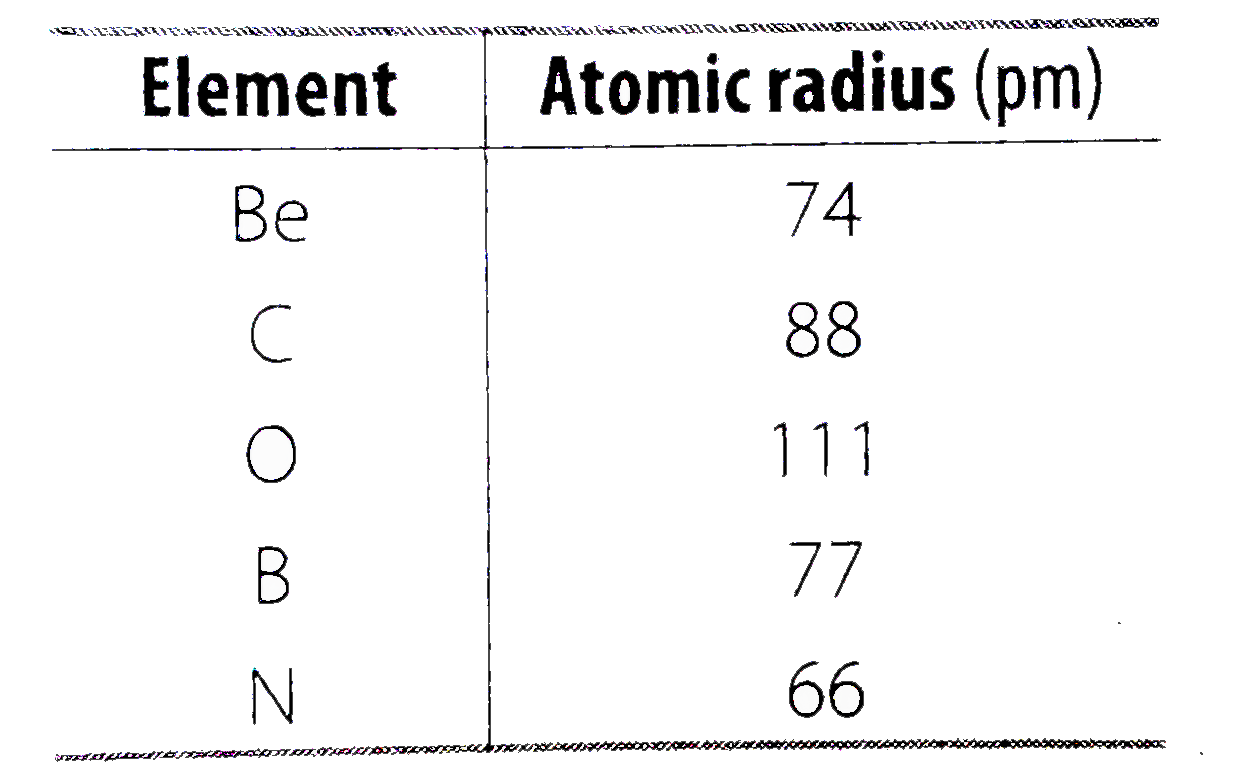Among the III A group elements, the difference in the atomic radius is large in between
Aluminium and Boron
Gallium and Aluminium
Thallium and Indium
Gallium and Indium
The correct Answer is:A
To solve the question regarding the large difference in atomic radius among the III A group elements, we can follow these steps:
Step 1: Identify the Elements in Group III A
The III A group elements (also known as Group 13) include:
- Boron (B)
- Aluminium (Al)
- Gallium (Ga)
- Indium (In)
- Thallium (Tl)
Step 2: Understand Atomic Radius Trends
The atomic radius generally increases down a group in the periodic table. However, due to various factors such as shielding effect and effective nuclear charge, the atomic radius does not increase uniformly.
Step 3: Analyze Atomic Radii of the Elements
The approximate atomic radii of the elements in Group III A are:
- Boron (B): 88 picometers
- Aluminium (Al): 143 picometers
- Gallium (Ga): 135 picometers
- Indium (In): 162 picometers
- Thallium (Tl): 156 picometers
Step 4: Identify the Largest Difference
From the atomic radii values, we can see that the difference in atomic radius is significantly large between Boron and Aluminium:
- Difference between Al and B = 143 pm - 88 pm = 55 pm
Step 5: Compare Other Differences
Now, let's compare the differences between other pairs:
- Al and Ga: 143 pm - 135 pm = 8 pm
- Ga and In: 135 pm - 162 pm = 27 pm
- In and Tl: 162 pm - 156 pm = 6 pm
Step 6: Conclusion
The largest difference in atomic radius is between Boron and Aluminium, which is 55 picometers. Therefore, the answer to the question is that the large difference in atomic radius is between Boron and Aluminium.
Final Answer
The large difference in atomic radius among the III A group elements is between Boron (B) and Aluminium (Al).
---
The III A group elements (also known as Group 13) include:
- Boron (B)
- Aluminium (Al)
- Gallium (Ga)
- Indium (In)
- Thallium (Tl)
The atomic radius generally increases down a group in the periodic table. However, due to various factors such as shielding effect and effective nuclear charge, the atomic radius does not increase uniformly.
The approximate atomic radii of the elements in Group III A are:
- Boron (B): 88 picometers
- Aluminium (Al): 143 picometers
- Gallium (Ga): 135 picometers
- Indium (In): 162 picometers
- Thallium (Tl): 156 picometers
From the atomic radii values, we can see that the difference in atomic radius is significantly large between Boron and Aluminium:
- Difference between Al and B = 143 pm - 88 pm = 55 pm
Now, let's compare the differences between other pairs:
- Al and Ga: 143 pm - 135 pm = 8 pm
- Ga and In: 135 pm - 162 pm = 27 pm
- In and Tl: 162 pm - 156 pm = 6 pm
The largest difference in atomic radius is between Boron and Aluminium, which is 55 picometers. Therefore, the answer to the question is that the large difference in atomic radius is between Boron and Aluminium.
The large difference in atomic radius among the III A group elements is between Boron (B) and Aluminium (Al).
Similar Questions
Difference in atomic radius is maximum for
View SolutionAmong the alkali metals, which element has the largest atomic radius ?
View SolutionAmong the hydrides of group 15 elements which is neutral?
View SolutionAmong group 13 elements the one forming an amphoteric oxide is
View SolutionAmong the group 13 the only element which is non -metal
View SolutionWhich among the following elements has the largest atomic radii ?
View SolutionMatch the correct atomic radius with the element.
 View Solution
View SolutionAmong the alkali metals, which element has the lowest ionic radius ?
View SolutionWhich group of atoms have nearly same atomic radius.
View SolutionAmong which of these element pairs is the increase in radius minimum?
View Solution

